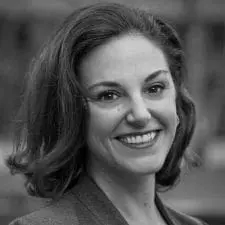Melissa S. Kearney is the Gilbert F. Schaefer Professor of Economics at the University of Notre Dame. Kearney is also Director of the Aspen Economic Strategy Group. She is the author of The Two-Parent Privilege: How Americans Stopped Getting Married and Started Falling Behind (2023).
Kearney was previously the Neil Moskowitz Professor of Economics at the University of Maryland, where she was on faculty from 2006-2025. She is a Research Associate at the National Bureau of Economic Research; a scholar affiliate and member of the board of the Notre Dame Wilson-Sheehan Lab for Economic Opportunities; and a non-resident Senior Fellow at Brookings. Kearney’s academic research focuses on domestic policy issues, especially issues related to social policy, poverty, inequality, and the economics of the family. Her work has been published in leading academic journals and has been frequently cited in the popular press.
She serves on the Board of MDRC and was previously on the Board of Governors of the Smith Richardson Foundation. Kearney was Director of the Hamilton Project at Brookings from 2013-2015 and co-chair of the JPAL State and Local Innovation Initiative from 2015-2018. She has served in editorial positions for the American Economic Journal: Economic Policy; Journal of Economic Literature; Journal of Human Resources; Demography; and Future of Children. She holds a BA in Economics from Princeton University and a PhD in Economics from the Massachusetts Institute of Technology, where she studied on a National Science Foundation graduate student fellowship and a Harry S Truman fellowship.

